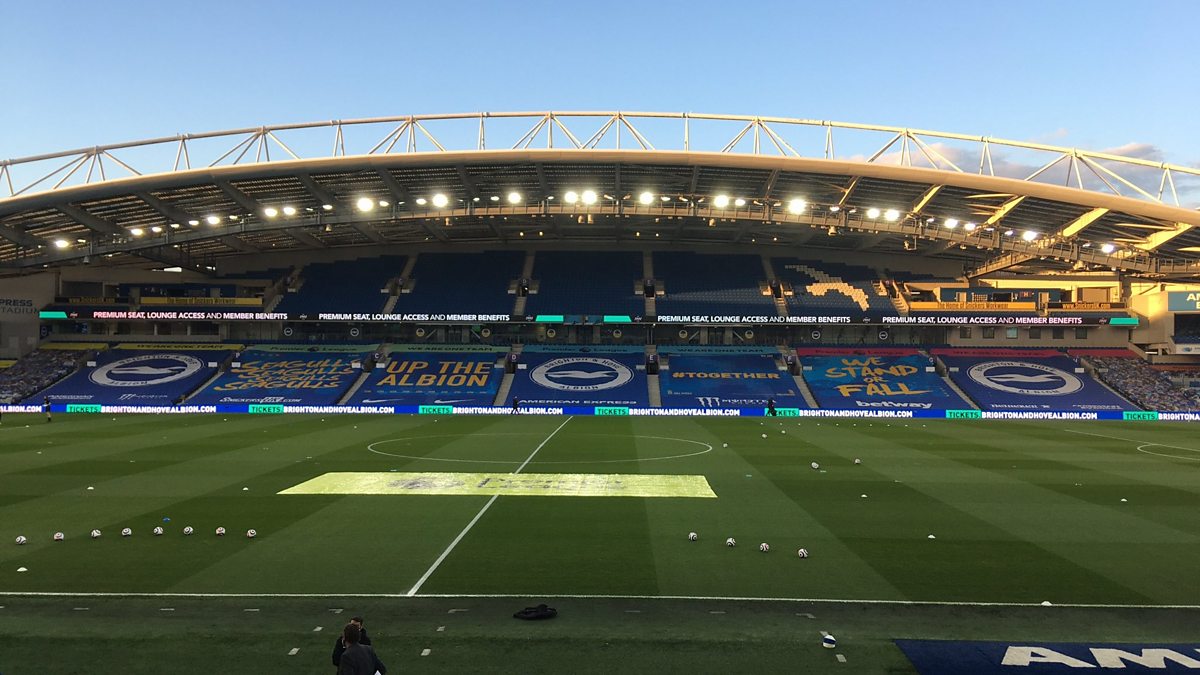New research has revealed the greenest Premier League clubs, with Brighton topping the list.
The study from Tipman Tips ranked all 20 Premier League clubs against four key factors, including club sustainability measures, pollution levels and green space around each stadium, and transport CO2 emissions in the area. Research revealed that Brighton is the greenest club in the Premier League, with a score of 80.6 out of 100.
The Amex Stadium has the second-most amount of green space within 500 metres of any stadium in the league, with 188.67 hectares accessible for fans, which is second only to Brentford. Brighton has the second-best air quality in the league too, with an IQAir air quality index level of 33 at the American Express Stadium, which is 14.1 under the Premier League average of 47.1.
The Seagulls also have seven out of an available 11 club sustainability measures in place, including rain and groundwater reuse efforts at their training ground and academies, 100 per cent diversion of waste from landfill, and electricity provided from 100 per cent renewable sources. Brighton also has the seventh-least amount of CO2 emissions from transport, at 255,600 tonnes. The average in the Premier League is 432,440 tonnes.
The top 10 greenest clubs in the Premier League:
|
Rank |
Club |
No. of Club Sustainability Measures /11 |
Pollution Levels |
Transport CO2 Emissions |
Green Space (hectares) |
Total Score /100 |
|
1 |
Brighton and Hove Albion |
7 |
33 |
255,600 |
188.67 |
80.6 |
|
2 |
Brentford |
5 |
39 |
331,900 |
214.38 |
72 |
|
3 |
Tottenham Hotspur |
10 |
40 |
136,600 |
27.97 |
59.3 |
|
4 |
Chelsea |
5 |
39 |
122,300 |
22.78 |
52 |
|
5 |
Fulham |
5 |
39 |
122,300 |
15.28 |
51.1 |
|
6 |
Bournemouth |
1 |
30 |
424,200 |
47.13 |
48.6 |
|
7 |
Crystal Palace |
6 |
38 |
315,200 |
20.99 |
48.6 |
|
8 |
Burnley |
4 |
58 |
126,500 |
154.84 |
46 |
|
9 |
West Ham United |
3 |
40 |
219,500 |
26.94 |
43.6 |
|
10 |
Newcastle United |
6 |
46 |
380,300 |
40.13 |
42 |
Scoring 72 out of 100 is Brentford’s Gtech Community Stadium, taking second place, as it’s surrounded by the most ‘green’ space of any ground in the Premier League, with a huge 214.38 hectares within a 500 metre radius of the stadium.
Spurs secure third spot, with a score of 59.3 out of 100. Tottenham have the second-highest number of club sustainability measures in place in the league, at 10 out of a possible 11.
Their new stadium in Haringey, is a borough of London that produces relatively low transport CO2 emissions too, at 136,600 tonnes, the fourth-lowest figure in the league. Despite only having five sustainability measures in place, Chelsea rank fourth with a score of 52 out of 100.
Stamford Bridge, based in Hammersmith and Fulham, is in the area with the lowest CO2 transport emissions in the league, at just 122,300 tonnes. Fulham sit just behind their West London rivals in fifth, with a score of 51.1 out of 100.
Also benefitting from the lowest transport CO2 emissions, Craven Cottage just misses out on fourth as it has seven fewer hectares of green space nearby than Stamford Bridge. At the other end of the table, Leeds United is the least green club with the lowest score in the league, at just 5.4 out of 100.
Leeds suffers from extremely high transport CO2 emissions, with the most in the league at over 1.4 million tonnes, zero club sustainability measures in place, and very little nearby green space within a 500-metre radius of the stadium at just 8.04 hectares. Commenting on the findings, Fraser Bricknell, Founder at Tipman Tips, said: “With the Premier League outlining its strategy to achieve net zero emissions by 2040, clubs introducing more sustainability measures, and fans becoming more aware of their own carbon footprint, we wanted to find out which clubs are at the forefront of sustainability in the Premier League.
“Brighton’s excellent air quality, abundant green space, and low transport emissions, see the Seagulls set a benchmark for eco-friendly football.”











